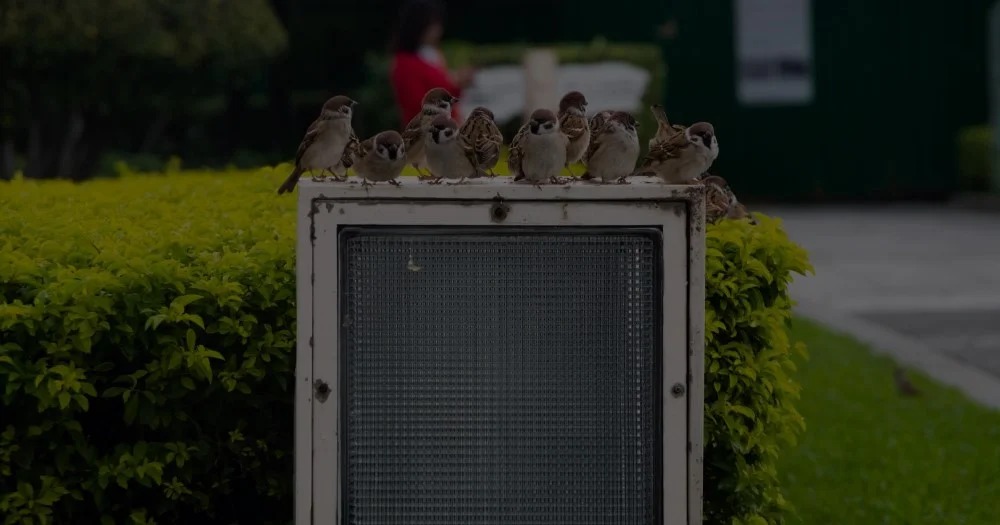Birds may seem harmless, but when they invade your property in large numbers, they can become a serious problem. Pest control for birds is essential for maintaining a clean, safe, and damage-free environment. While birds play an important role in nature, their presence on rooftops, in warehouses, around airports, or near homes can cause structural damage, spread diseases, and create messy conditions. Managing this issue without harming the birds requires expert solutions and a proactive approach.
Why Bird Control Matters
Birds nesting on buildings or gathering in large flocks near human spaces can create numerous problems. They leave behind droppings that contain harmful bacteria and fungi. Over time, these droppings can corrode metal, damage paint, and clog drainage systems. In commercial settings, bird infestations can harm your brand reputation and create unsafe conditions for customers and staff.
For residential properties, constant noise, blocked gutters, and damage to solar panels or HVAC systems become ongoing issues. The longer birds stay, the harder it becomes to remove them. That’s why professional pest control for birds helps prevent long-term damage and ensures a healthy environment for people and pets.
Common Bird Species That Cause Trouble
Not every bird poses a threat, but a few species commonly become pests. Pigeons, starlings, sparrows, and seagulls top the list. These birds adapt quickly to urban settings, finding food in trash bins or nesting in vents, rooftops, and gutters. Pigeons, in particular, are notorious for building large nests that can block ventilation systems and create fire hazards.
Starlings and sparrows often move in large groups, making it difficult to control their activity once they’ve settled. Their nesting habits, aggressive behavior, and ability to reproduce quickly make them difficult to manage without professional intervention. That’s why targeted pest control for birds becomes a crucial solution.
Health Hazards from Bird Infestation
Bird droppings may seem like a simple nuisance, but they carry real health risks. Diseases like histoplasmosis, salmonella, and cryptococcosis can spread through inhaling particles from dried droppings. In commercial food facilities, bird contamination may even violate health codes, leading to fines or shutdowns.
Feathers and nesting materials also contribute to clogged air systems, increasing the risk of respiratory problems. Droppings near entrances, stairwells, or loading docks can cause slips and falls. These risks increase the importance of pest control for birds to ensure safety in public and private areas alike.
Non-Lethal Methods for Bird Control
Many people assume bird control requires harmful traps or chemicals, but humane and environmentally responsible options exist. Non-lethal pest control for birds uses deterrents that discourage nesting and roosting without injuring the animals.
One of the most common methods involves bird spikes. These stainless-steel or plastic devices prevent birds from landing on ledges, signs, or beams. Another option is bird netting, which creates a physical barrier around open spaces like balconies, loading docks, and agricultural structures. For wide-open areas like rooftops or airports, visual and audio deterrents, such as predator decoys and ultrasonic devices, offer an effective solution.
Professionals often customize these solutions based on bird species, building design, and environmental factors. With the right approach, you can solve the issue without breaking ethical or legal boundaries.
Importance of Professional Pest Control for Birds
While DIY methods might seem tempting, they rarely offer long-term success. Bird control requires a detailed understanding of bird behavior, nesting habits, and legal regulations. Many bird species are protected by federal or provincial laws, so improper removal could lead to legal trouble.
Professional pest control for birds ensures compliance with regulations while offering efficient and lasting results. Experts inspect your property, identify risk areas, and develop a tailored plan that includes exclusion methods, deterrents, and ongoing monitoring. This comprehensive approach eliminates the problem at its root and prevents future invasions.
Commercial Bird Control Solutions
Commercial spaces face higher risks when dealing with bird infestations. Warehouses, food processing plants, shopping centers, and airports attract birds due to the availability of food, shelter, and water. In these environments, birds pose safety hazards and may lead to compliance issues under health and safety codes.
Installing bird control systems in commercial settings requires careful planning. Professionals use tools like bird wire systems, electric track deterrents, and motion-sensing repellents to keep birds away from rooftops, signage, HVAC units, and dock doors. These solutions provide invisible yet effective barriers that maintain the building’s appearance while solving the problem discreetly.
Residential Bird Control Strategies
Birds nesting in attics, chimneys, or vents can disrupt daily life at home. Homeowners often find nests in hard-to-reach places, and removing them becomes both a physical and legal challenge. Simple strategies like keeping garbage bins closed, trimming trees, and sealing entry points can help reduce bird activity around the home.
However, when birds continue to return year after year, it’s time for professional pest control for birds. Experts can install netting, seal gaps, and recommend repellents suited for residential use. They also clean and sanitize the area to remove droppings and nesting materials, eliminating odors and reducing the chance of repeat infestations.
Eco-Friendly and Legal Considerations
Protecting the environment and following the law is critical when addressing bird problems. In many regions, birds like swallows, crows, and certain migratory species are protected. Removing nests or harming these birds without a permit can lead to fines or legal action.
Ethical pest control for birds prioritizes safety and legality. Professionals use eco-friendly solutions that align with wildlife protection laws. They also educate clients on best practices for preventing future bird problems, helping property owners maintain compliance and sustainability.
Maintenance and Monitoring
Bird control is not a one-time solution. After implementing bird deterrents or exclusion systems, regular maintenance keeps them functioning correctly. Damaged netting, fallen spikes, or weather-worn decoys may lose effectiveness over time.
Routine inspections and monitoring are part of long-term pest control for birds. Professionals check for signs of bird activity, assess the condition of deterrents, and make necessary adjustments. Staying proactive ensures birds don’t return and your property stays clean, safe, and bird-free.
Conclusion: Take Control Before It Gets Worse
Bird infestations don’t resolve on their own. The longer they stay, the more damage they cause. From structural issues to health hazards, the risks grow quickly. That’s why timely and professional pest control for birds matters. With the right tools, knowledge, and strategies, you can protect your property while respecting the environment and wildlife.
Whether you manage a business or own a home, acting early ensures safety, cleanliness, and peace of mind. Don’t let birds take over—invest in smart bird control and enjoy a bird-free environment, indoors and out. for blog to visit our viewsparrow.









